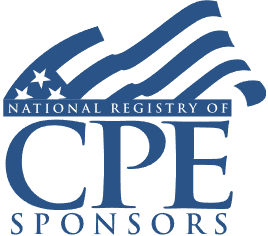Employee Benefit Plan Audit Peer Reviews
Preparing for Risk Assessment, Control Document Inspection, and Other Peer Reviewer Concerns

Course Details
- smart_display Format
On-Demand
- signal_cellular_alt Difficulty Level
Intermediate
- work Practice Area
Accounting
- event Date
- schedule Time
1:00 p.m. ET./10:00 a.m. PT
- timer Program Length
110 minutes
-
BARBRI is a NASBA CPE sponsor and this 110-minute webinar is accredited for 2.0 CPE credits.
-
BARBRI is an IRS-approved continuing education provider offering certified courses for Enrolled Agents (EA) and Tax Return Preparers (RTRP).
This course will help auditors identify issues frequently arising in peer review audits of employee benefit plans and offer best practices to address potential problems and work with reviewers.
Description
Firms that audit employee benefit plans must pay careful attention to peer review preparation and anticipate the reviewer's concerns about handling participant data, investments, fees, contributions, and other aspects of the plan. The plan audit group's reputation is at stake during these reviews.
Peer reviewers routinely find substandard risk assessment procedures, failure to properly document the procedures performed, improper reliance on SOC reports, failure to test investment transactions earnings, timely remittance of employee contributions, and other problems in reviewing benefit plan audits. Plan audit groups often struggle to assess risk adequately.
Listen as our veteran employee benefit plan advisers and auditors help you evaluate your firm's peer review preparation and proactively address noncompliance issues that often arise during inspections.
Outline
- Preparing for the peer review
- DOL emphasis on deficiencies
- Unique reporting requirements
- How to structure the peer review
- Issues with documentation
- Written audit programs
- System of quality controls
- Inspection requirements and considerations
- Common errors and deficiencies
- Common pitfalls with defined contribution plans
- Common pitfalls with defined benefit plans
- Approach to the review team
Benefits
The panel will explore these and other critical topics:
- Standards and guidance to be followed: general AICPA peer review standards and specific checklists, interpretations, and alerts
- Common audit deficiencies: areas targeted in participant data, investments, contributions, plan obligations, and elsewhere
- Documentation mandates: acceptably written audit programs and internal control documentation
- Proactive measures: logical steps to take now to handle potential noncompliance before the next peer review
NASBA Details
Learning Objectives
After completing this course, you will be able to:
- Determine the standards and guidelines to be followed
- Identify the AICPA peer review standards and specific checklists, interpretations, and alerts
- Ascertain common audit deficiencies, including areas targeted in participant data, investments, contributions, and plan obligations
- Verify compliance with documentation mandates, including acceptably written audit programs and internal control documentation
- Decide the best proactive measures in handling potential noncompliance before the next peer review
- Field of Study: Auditing
- Level of Knowledge: Intermediate
- Advance Preparation: None
- Teaching Method: Seminar/Lecture
- Delivery Method: Group-Internet (via computer)
- Attendance Monitoring Method: Attendance is monitored electronically via a participant's PIN and through a series of attendance verification prompts displayed throughout the program
- Prerequisite: Test66

Strafford Publications, Inc. is registered with the National Association of State Boards of Accountancy (NASBA) as a sponsor of continuing professional education on the National Registry of CPE Sponsors. State boards of Accountancy have final authority on the acceptance of individual courses for CPE Credits. Complaints regarding registered sponsons may be submitted to NASBA through its website: www.nasbaregistry.org.

Strafford is an IRS-approved continuing education provider offering certified courses for Enrolled Agents (EA) and Tax Return Preparers (RTRP).
Unlimited access to premium CLE courses:
- Annual access
- Available live and on-demand
- Best for attorneys and legal professionals
Unlimited access to premium CPE courses.:
- Annual access
- Available live and on-demand
- Best for CPAs and tax professionals
Unlimited access to premium CLE, CPE, Professional Skills and Practice-Ready courses.:
- Annual access
- Available live and on-demand
- Best for legal, accounting, and tax professionals
Related Courses
Recommended Resources
Building Your Book: Strategies to Secure Long-Term Success
- Business & Professional Skills
- Career Advancement
- Talent Development
